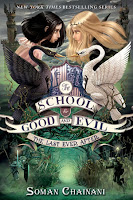***
I am more accustomed to reading books that have been used as bases for movies. I remember worrying whether the existence of a film version is not good enough reason to read a book. But, looking at it now, the film could be a marketing strategy for the book, since books are always in stores, unlike movies, which don’t always stay in cinemas.
I recently had an experience that is the opposite of a novel-turned-movie phenomenon. Don’t get me wrong, I know that making novel versions of films isn’t a new concept. However, reading a book after watching the original film isn’t really something exciting for me.
But one email is bound to change everything.
I was invited by Arlyn Rosales from ABS CBN Publishing to be part of a book discussion for the novel version of One More Chance, the hit 2007 romance starring Bea Alonzo and John Lloyd Cruz. I immediately said “yes.”
However, due to conflict in the schedule, the book discussion was cancelled. Instead, I received a package containing these beautiful things.
Behold.
And with that, my initiation to reading novel versions of films began.
One More Chance (the novel) was written by Juan Miguel Sevilla, who was known for his screenplays for Star Cinema hits such as Miss You Like Crazy, My Amnesia Girl, and Unofficially Yours.
The novel opens with a prologue dedicated to memory, which honestly reminds me of Michelle Richmond’s The Year of Fog. Sevilla patiently describes Popoy’s recollection of how inconsistent memory could be, and how memorable falling in love for the first time is.
With his strong wordplay, Sevilla crafts expressions that both reflect the film while giving the novel a distinct personality -- expressions that will surely tug at the heartstrings of hopeless romantics.
The plot unfolds like the movie itself, with some expected changes. And these are good changes that allowed the novel to offer a new, fresh perspective on the narrative.
But just like any novel and film that existed to complement each other, one inevitably stands out. And this time, it’s the movie.
Sevilla wrote for the fans of the film, not for readers who haven’t watched it yet but still wanted to read a romantic novel. While the movie is vivid in all dimensions (let’s not even get started on how good Bea and john Lloyd portrayed their characters, the hugot lines that never got old, and the soundtrack, my goodness!), the novel seemed to be too caught up in the excitement to tell its own story. The film showed the viewers the metamorphosis of Popoy and Basha from lovers to strangers and back, making the viewers part of the journey. The novel reports that metamorphosis from the point of view of an editorial omniscient narrator.
Reading the novel is a very emotional roller coaster ride, and it’s not entirely because of prior knowledge. It always feels good to be allowed inside the character’s head and see his or her internal struggles. But sometimes, ignorance is truly bliss. Being given too much removes the challenge of understanding the characters and the complex human experience that they embody.
Several pages before the novel ends, and probably just when I thought I know exactly how the writer will choose to end the story, a surprise awaits. And it’s an emotional roller coaster ride once again.
***
Speaking of emotional hopeless romantic stuff, do not miss A Second Chance, the sequel to One More Chance on November 25 in cinemas.
Photo source:
One More Chance (the novel)
Photo source:
One More Chance (the novel)






